Student Winner
Interaction Award
Core77 Design Awards 2023
Hemi - A therapeutic toy
Cerebral palsy (CP) is the most common physical disability in childhood, it is caused by damage to the brain and has no cure. Hemiplegia, where half of the body has difficulty with voluntary movement, is the most common presentation of CP. Children with hemiplegia have difficulties performing everyday activities that rely on the coordinated use of both hands, such as feeding or dressing. Specialists usually recommend additional home therapy to maintain the skills and extend the therapeutic benefits. However, in many cases, there is a lack of engagement and compliance in the home environment. The problem with therapy is that it consists of repetitive exercises that a lot of kids may stop doing due to low motivation or unengaging therapy tools.
How can we make home therapy more playful for these kids? Hemi is a therapeutic toy that motivates children with arm-hand motor disabilities to continue entertainingly exercising at home. It consists of physical controllers and a digital platform with therapeutic games. By turning repetitive training into playful exercises, hemi makes long-term therapy possible for children without even knowing they are exercising.


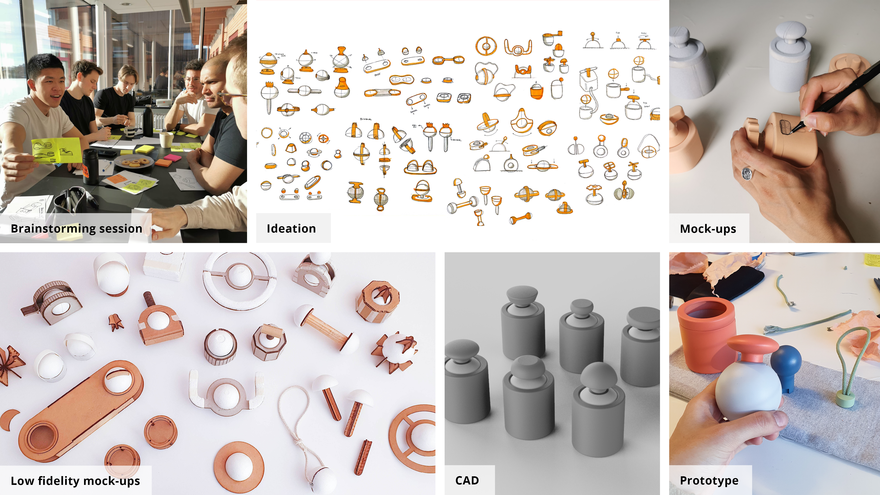
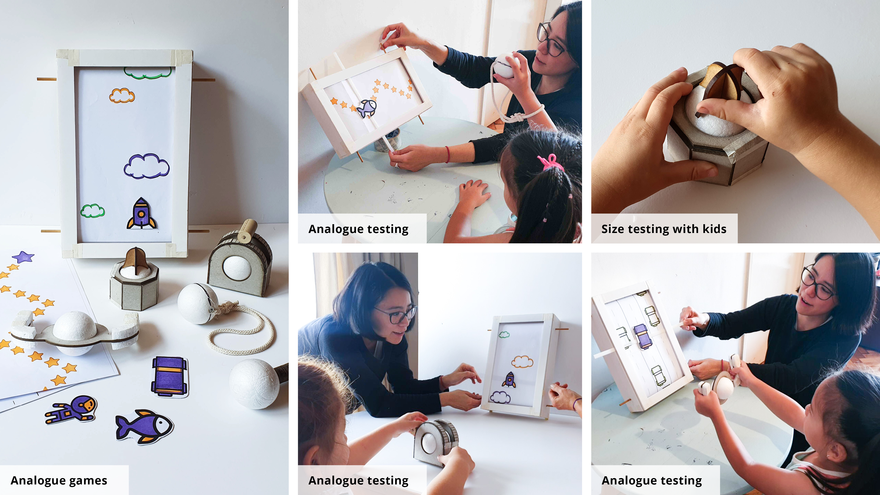
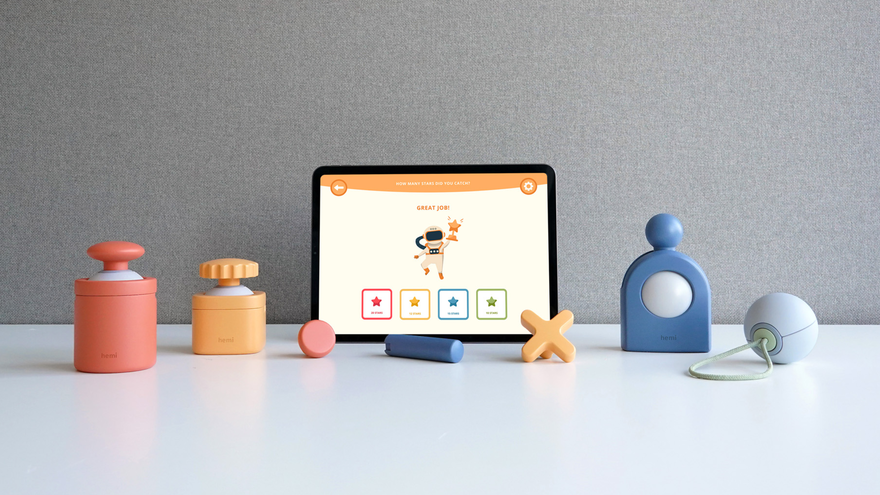

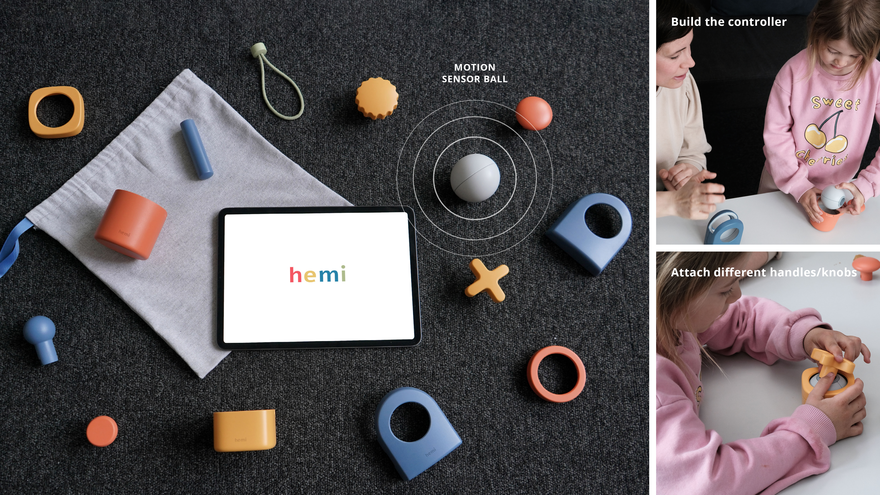
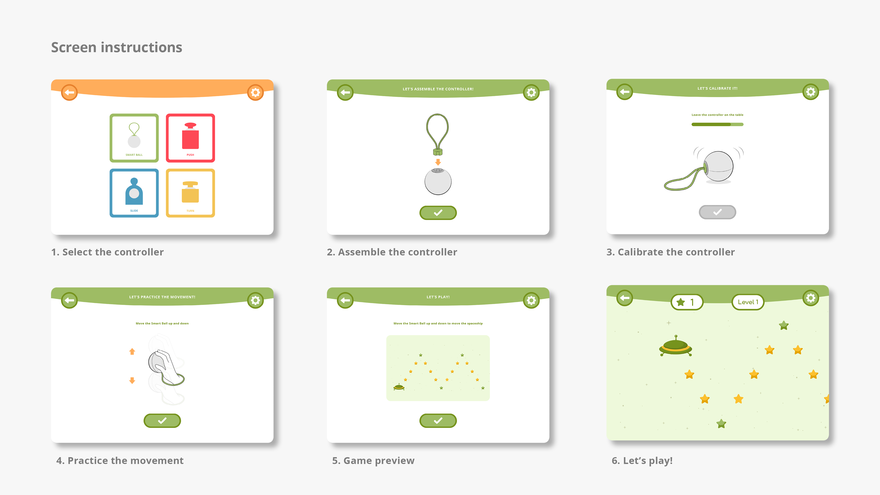
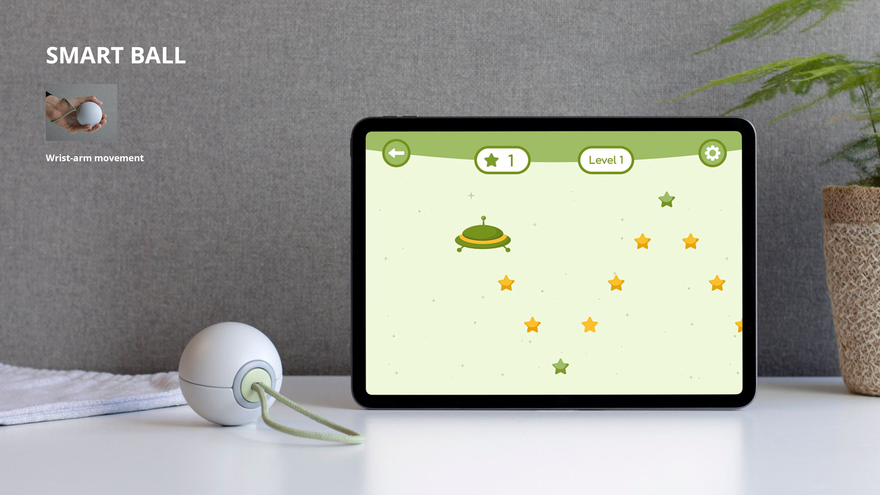
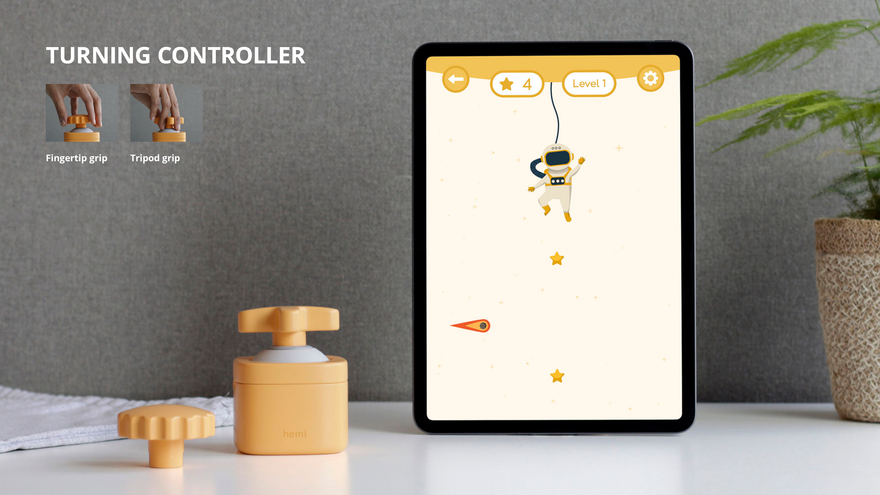
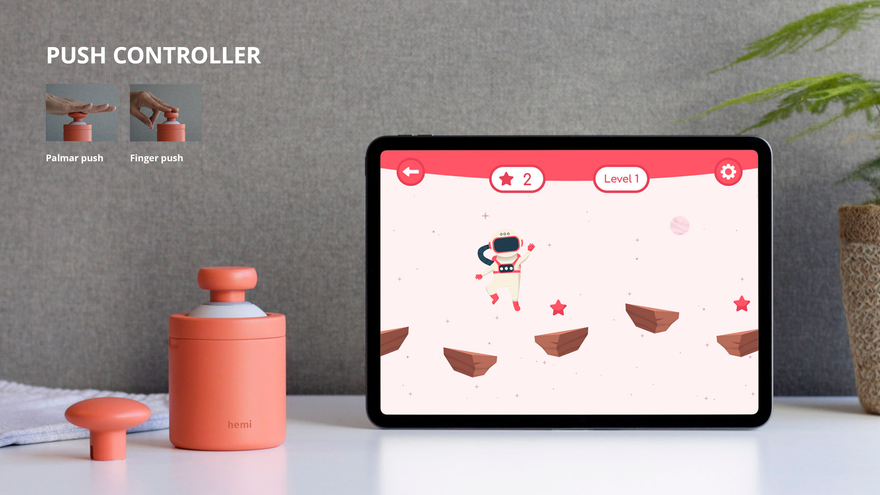
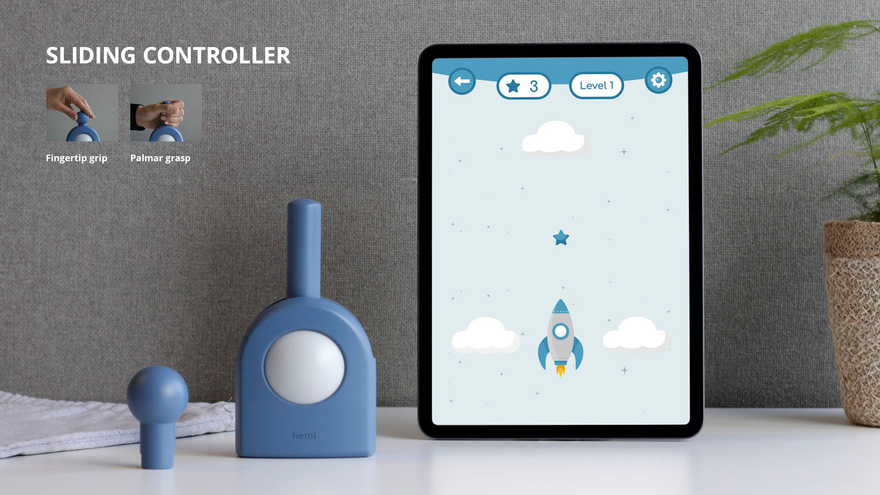
CONTEXT
What is hemiplegia?
Hemiplegia in children is a type of Cerebral Palsy (CP) that results from damage to the brain with consequences for movement and posture impairments. This damage may occur before, during or shortly after birth and it affects one vertical half of the body.
Why arm-hand therapy?
In most cases with children with hemiplegia, the arm is more affected than the leg and contributes to difficulties performing activities that rely on the coordinated use of both hands, such as feeding, dressing, bathing, etc, because of movement difficulties in the affected (hemiplegic) hand.
A lack of treatment can lead to contractures of the muscles and joints. Therefore, physical and occupational hand therapies play an important role to prevent the disuse of the impaired side of the body, minimize contractures and improve the child's participation in everyday activities.
The challenge
Once a hemiplegia diagnosis is confirmed, in most cases at a very young age, therapy treatments become part of the children's everyday life and in most cases a life-long treatment.
In my early research to understand the topic of rehabilitation in children with disabilities, I could see that exercising does not only happen at the rehabilitation centers, home becomes an important environment for children to keep doing therapy exercises.
Specialists usually recommend additional home therapy exercises to maintain the skills learned during regular therapy sessions and extend their benefits. However, in many cases, there is a lack of engagement and compliance in the home environment.
"Often we show kids and parents what to exercise but the "compliance" is low. They simply do not do the exercise they are asked to do". Physiotherapist - Umeå, Sweden.
A well-known reason for this is low motivation in children to perform repetitive activities. Motivating a child to perform uninteresting, frustrating and repetitive movements by themselves is challenging and even more so in a home environment when not with their therapists.
"Usually rehabilitation is quite boring, so you have to make it fun and sometimes in a way that they are doing it without thinking about it". Physiotherapist - Umeå, Sweden.
DESIGN OPPORTUNITY
How might we make home therapy a playful experience rather than a chore?
Doing therapy exercises can sometimes feel like doing homework for children. The aim is to help children engage and maintain their motivation while performing repetitive movements without realizing they are exercising.
DESIGN PROCESS
The topic was approached with a user-centered design process to understand the field of rehabilitation in children with hemiplegia motor disabilities and explore how design can spark motivation and playfulness in this context.
The solution was developed through extensive research including field research to rehabilitation centers, observations of therapy sessions with kids and interviews with specialists (psychologists, occupational and physiotherapists) as well as with parents.
During the creative phase of the project, different workshops were hosted to bring input from other designers and generate various ideas to broaden the spectrum. Several design directions took shape during the process, they were evaluated and validated with specialists and parents and the most prominent one was later tested with kids.
The design exploration was carried out with a mix of quick sketches and iterative physical mockups. This allowed me to try out ideas early in the process, make them more tangible when presenting them to specialists and parents and get an understanding of the targeted hand movements while interacting with the object. To present the final result, a physical high-fidelity model was made using rapid prototyping methods.
SOLUTION
Hemi is a therapeutic hybrid toy designed for children with hemiplegia motor disabilities and related conditions to improve their hand function. It is an accessible solution that can be used at home to complement the child's regular therapy session and during a therapy session.
This hybrid system is composed of physical controllers and digital therapeutic games. By interacting with the controllers, kids can improve their hand-motor skills while playing different digital games designed to allow the repetition of hand movements with a therapeutic effect.
By turning repetitive training into playful therapy exercises, hemi makes long-term therapy possible for children without even knowing they are exercising.
Product Architecture
Hemi is a flexible hybrid system. Its main component is a motion sensor ball that uses Inertial Measurement Unit (IMU) sensor technology. By attaching different handles and knobs to it and placing the ball into different cases, the child can build different types of controllers, such as the smart ball controller, the turning controller, the push controller and the sliding controller.
Each controller includes two different types of handles or knobs to encourage children to exercise various hand grips or hand movements. The flexibility and modularity of the system allow Hemi to expand over time by adding new add-ons to build new controllers that will allow children to exercise other types of hand-arm movements.
BENEFITS AND VALUE
Playful therapy: Hemi turns repetitive training into a playful moment without kids realizing they are exercising.
Long-term motivation: It makes long-term therapy possible for children by offering a variety of fun games under the same solution and increasing the difficulty to keep it challenging. In addition, children are encouraged to collect points and medals as a way to motivate continuous playing with therapeutic effects.
An accessible solution for the home environment: It is an accessible therapy toy designed for the home environment that can be used as support for the child's regular therapy session. However, it can perfectly be used during a regular child-therapist session.
An expandable solution: It was designed as a flexible and modular system to expand over time, making it more sustainable and accessible for the home environment. By adding new attachments and cases, but still using the same Motion Ball component, it gives the possibility to create new controllers to exercise other arm-hand movements without adding too many extra costs. The digital content can be easily upgraded with new games suitable for different kids' ages to keep them engaged over time.
Supporting parents: This solution provides parents with a variety of fun therapeutic games for different hand movements, so they do not have to stress planning all the exercises, which was pointed out during my research to be stressful and time-consuming for parents. Consequently, many families struggled to continue exercising in the home environment.
Core77 Design Awards 2023
- A/V & Photography Equipment
- Apps & Platforms
- Branding & Identity
- Built Environment
- Commercial Equipment
- Consumer Technology
- Design for Social Impact
- Emerging Technologies
- Furniture & Lighting
- Gaming Accessories
- Health & Wellness
- Home & Living
- Interaction
- Lifestyle Accessories
- Packaging
- Robotics
- Speculative Design
- Sports & Outdoors
- Sustainability
- Tools
- Toys & Play
- Transportation
- Visual Communication